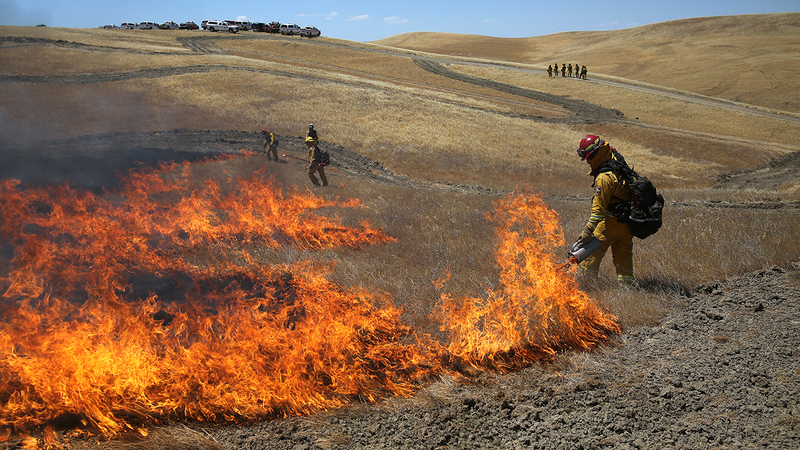
Cal Fire personnel engaged in live fire training in Williams, California. Alex A Menendez Shutterstock
When California Governor Gavin Newsom took office on January 11, 2019, he could have given top priority to dozens of pressing issues. But few issues were hotter than wildfires, especially coming on the heels of three fires that ignited almost simultaneously: the Hill and Woolsey fires in Southern California, and the Camp Fire in Northern California—the latter of which was the state’s deadliest conflagration to date.
In response, Newsom took several steps on his first day on the job. At a press conference in Placer County, the governor spoke about the state of California’s wildlands, plagued by persistent drought and rising temperatures due to climate change. At the event he appointed Thom Porter as the director of CAL Fire and announced a comprehensive plan to “address California’s wildfire and emergency response deficiencies.”
A significant part of that plan is the Forest Management Task Force, led by Newsom’s office alongside Cal Fire. The task force has its own panel of scientists from local and national institutions, as well as local and federal governments, and it addresses tree mortality, forest management and restoration, regulations, prescribed fires, and landowner education.
Newsom appointed Jennifer Montgomery to lead FMTF in 2019. Montgomery is an advocate for educating landowners and government bodies about the historical relationship Indigenous Americans had with the land, which involved planned burns. The task force’s main goal is to fill in the knowledge gap of how climate change is affecting California’s forest lands. Then it aims to create actionable steps that become written directives from the governor’s office, backed by additional funding from the federal government.
Montgomery attributes the volatility and sweeping size of recent wildfires to a century-long negligence of forest management. In an interview with NPR reporter Maddie Sofia, she discusses how fire suppression practices were brought over by European settlers.
Historically, indigenous North Americans studied the health of the forest and the variety of trees in order to decide which types of growth required prescribed burns. She says much of this knowledge has been forgotten.
Spanish settlers sought to avoid fires, believing that growth was good and burns were bad. Fire exclusion and suppression then expanded during the gold rush, Montgomery explains. Now, part of the reeducation process is teaching landowners that small fires help prevent other fires. “Not all fires are bad and not all trees are good,” she says.
FMTF’s biggest challenge is that California’s forests are overgrown and unhealthy already. Certain trees in the understory—the vegetation growing below the canopy—function as kindling. This growth needs to be proactively reduced.
With 57% of the state’s land controlled by the federal government, 40% belonging to private landowners, and only 3% managed by the state government, FMTF must work with all stakeholders and come up with different strategies for each responsible group.
Montgomery is also an advocate for confronting climate change, which she says has magnified the degrading health of the forests. Bark beetle infestations and tree die-offs increase with hotter, drier weather. When trees are healthy they can expel the bark beetles; when they are weakened, the bark beetles penetrate the life column of the tree’s internal structure and cause the base to rot out.
Finally, Montgomery mentions the increasing number of Californians taking up residence in fire-prone areas. This puts many of the state’s citizens at risk of losing their homes and in turn increases opportunities for humans to start fires through day-to-day activities.
The task force meets regularly and offers webinars to interested members of the public. Find links to agendas and webinars here.
Long form articles which explain how something works, or provide context or background information about a current issue or topic.